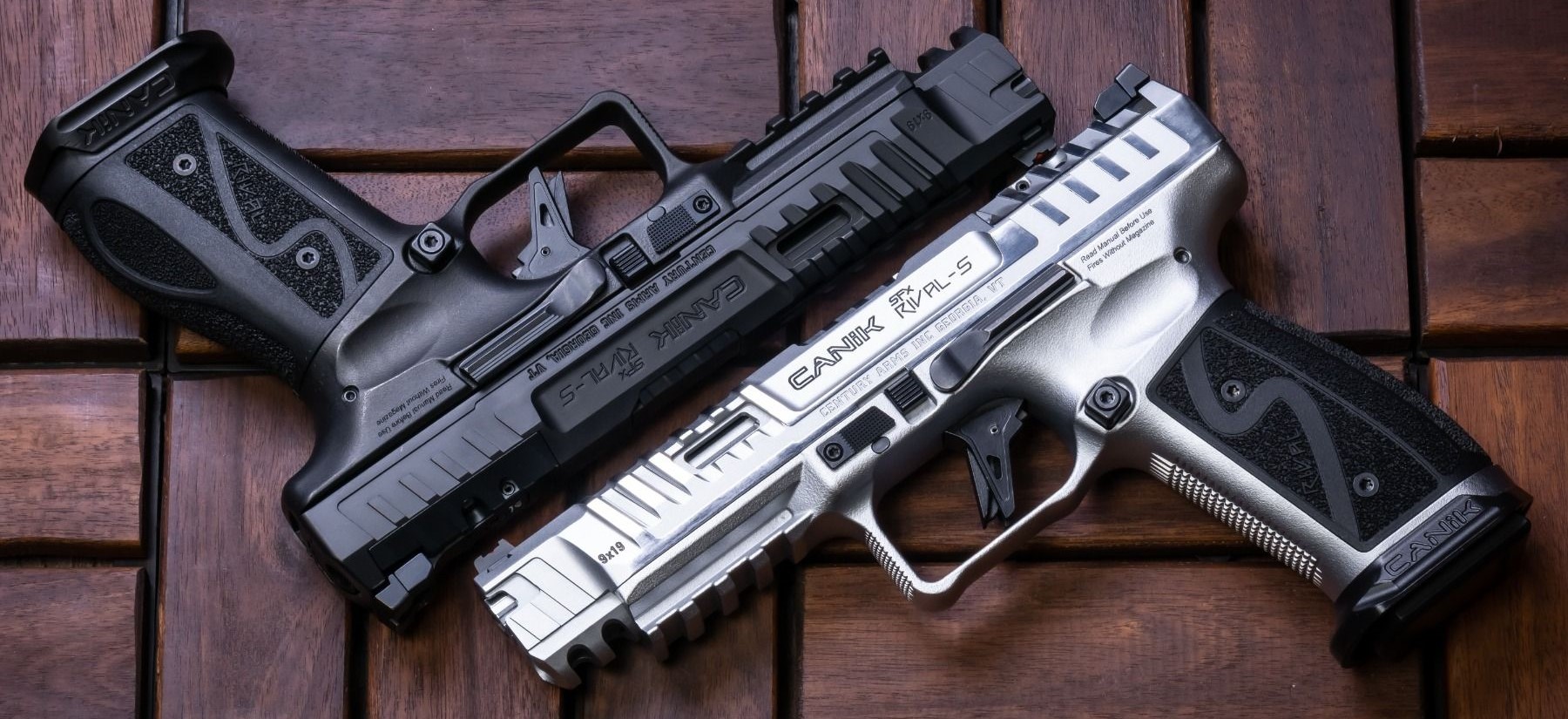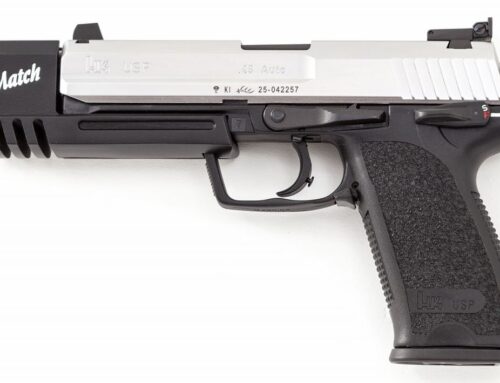Last month I had taken a closer look at Canik’s “gateway drug” to the 5 inch barreled SFx series of striker-fired pistols. Those who were paying attention will have noticed a certain promise to review the SFx Rival-S next. Happy May, everyone! It’s time for some chromed all steel nine millimeter goodness.
First impressions matter, we all know it. Compared to most of the new firearms to have come out in the last, oh, 20 years, the Rival-S in all of its polished chrome glory is one of the only guns to have left me in awe. Pictures don’t do it justice, and yet they had still held my attention so well that I sorely wanted one of my own. As it turns out these steel framed Rivals are quite rare breeds, which is a pity as I think they’re the pinnacle of Canik designs. Sure, they’re quite heavily stylized. These are competition guns and so they really went all out with the theatrics. You wouldn’t want to run one of these for carry use. But for the joy of shooting I can promise a Rival-S will be more pleasant at a range than a sub-compact.
Looks aren’t all, though. A gun can be loved or hated from the moment it sits in your hand. Canik did an amazing job of making the dimensions and contours of the steel framed series feel exactly like the polymer versions but with a whole lot more weight. As I was told the Rival-S was made to be at the very top edge of some weight class in competitive shooting. Very much a purpose-built shooter, this one. Unlike other handguns in this class such as the Walther Q5 SF which are all finely machined, the Rival-S has a slight texture to the surface which I think is from the forging process. I’d gather this is what allows the frame to have those natural curves without being machined to within an inch of its life. While this subtle pebbly texture won’t do much for providing traction I find it adds a little something overall to the looks and feel and helps it to stand out that little bit further.
The controls, disassembly, and operation are the same as other Caniks with the exception of the Rival-S having a magazine release which can be more easily swapped out for extended or oversized releases if that’s your jam. There’s also what looks like a take-down lever ahead of the actual take-down tabs but these appear to be textured pads for your off-hand. I would hazard a guess that you could then swap these out for “gas pedal” options if you wanted. Optics cut slides are standard, however the Rival-S shares the Rival pattern rather than the Mete SFx, which is to say if you install an optic you will be forfeiting your rear sight.
One more downside to the optic situation on the Rival and Rival-S is the requirement of an adapter plate, As far as I’m aware there isn’t a “native” optic cut on these guns, meaning that any and all optic options will require an adapter plate. In addition, these plates are on the taller side. Once installed your optic will essentially be sitting directly on top of the slide rather than being recessed, not closer to the bore which is what the ultimate goal is. On the other hand, due to the height of these plates you can easily install a side charging handle if you so desire. Canik only lists the optic situation as having 4 different adapter plates in the kit, or 5 if you get the blacked out “Dark Side” version of the Rival-S. Huh, kind of an odd discrepancy there.
One area which I was paying closer attention to is the transition between the steel frame and the flush grip panels. Some firearms do this well (again looking at those steel framed Walther Q4 and Q5 examples) and some do so quite poorly (the recent metal framed Smith & Wesson models with the M&P 2.0 sandpaper-like texturing.) The Rival-S surprisingly did a very good job of blending seams and textures with the grip panels fitting flush into the frame rather than feeling bolted on top. These grips are great, surprisingly more subtle than I was expecting but they are properly great.
The iron sights, copied from the Rival line, feature a fully adjustable serrated blacked out rear and a small red fiber optic front. This Rival-S had an optic so I couldn’t try out the irons but I recall liking them on a polymer framed Rival SFx. As I recall they were quite similar to the CZ Shadow 2’s sight picture.
Next we get to the trigger and I’m going to spin paradoxical here: The Canik Rival and Rival-S is one of the best striker-fired triggers on the market, but it’s also one of the worst. This is subjective, of course. Where it excels is in the pull and weight, the length of travel and reset. Short, crisp, audible, tactile, phenomenal. A truly excellent trigger pull, which is regrettably tied to what may very well be the least comfortable trigger shape I have ever felt on a gun, period.
If you shoot with the very tip of your finger then it probably won’t bother you at all. It’s a wide and very flat surface with sharp checkering and the drop safety is most of the trigger’s width rather than being a thin blade like most others.
If you’re at all inclined to hook your finger around the trigger like I do, you will hate this thing with an undying passion. It’s like trying to squeeze a wood file, all sharp right angled metal edges. What I find even worse is that you can buy these triggers directly from Canik to swap out most of their lineup to look and act like the Rival…but they don’t offer a trigger swap the other way around. Where are those nicely curved polymer triggers at, Canik?
What about aftermarket support? There is one company I’m aware of which makes a bunch of Canik triggers, Freedom Smith. The only problem? All but one of their trigger styles also happen to be flat faced. The one “curved” option they have is not all that curved and still features some sharp edges.
Because the Rival-S strongly encourages tip of finger shooting habits I immediately detected some trigger slap, three shots in and my finger was aching. Not off to a great start! Despite this the gun honestly handled remarkably well. Slow cadence or something a bit faster and my groups were almost identical with a red dot up top, and I rarely shoot with pistol optics. When I really slowed down at thirty feet I landed five shots all connecting in a near perfect right angle, coincidentally much like that dreadful trigger shoe.
I think it might have been mocking me.
One more bit on the trigger, I had noticed the polymer Caniks tended to have a left-canted trigger for whatever reason. The Rival-S by comparison was so minor as to be a non-issue. It might be due to that flat faced aluminum trigger but whatever is responsible here has made an improvement.
With its all steel construction the Rival-S has exceptional balance and feels very well thought out, though I had some curious discoveries after all of twenty rounds. Despite the grip copying the overall shape of the polymer versions the knuckle of my thumb was starting to feel achy as well. The area around the web of the thumb feels nicely shaped in hand but under recoil something about it was jarring my joint. The back of the grip also happens to have a very noticeable roll pin in this same region which presented a secondary concern. In short order that gap was leaving an indent on my hand and I wasn’t gripping it all that hard. After having this same spot rubbed raw many times on an XDm it left me feeling uncertain.
How do you end up with such a pretty all steel gun for less money than the others? Less milling work on the lower receiver and a bit less attention to detail, the sort of thing which would make those German manufacturers like Walther and HK scoff at. Looking on Canik’s own website, if you look closely at the front texturing on the trigger guard you can clearly see inconsistencies with how the checkering had been cut. I had noticed similar inconsistencies with the Mete SFx, although sometimes I had to look real close to spot them. On the surface these guns look amazing, but once you dig a little deeper in the pieces of this puzzle start to make a clearer picture. These issues won’t affect your IDPA scores any but if you’re a stickler for the little details they might trigger some OCD reactions.
So here we are, the top end SFx currently offered in Canik’s lineup. I found the Mete SFx to be good, great for the price, but still lacking in some areas. At the top of the Canik mountain I’m finding an overall better pistol but with its own share of hangups. It’s an exchange of one set of issues for another in a far more attractive package, and a package which does shoot quite nicely and includes even more accessories right out the gate.
If you know you want this gun then you probably have a good idea of what you’re getting into. If you want a chance to get a ballpark idea of its handling then a polymer framed Rival will get you there; Just imagine that feeling with more weight, better balance, and less recoil. The Rival-S line is beautiful, functional, competent, and one which I would love to wholly recommend, but overall I feel that much like the Mete series there is still room for improvement.








